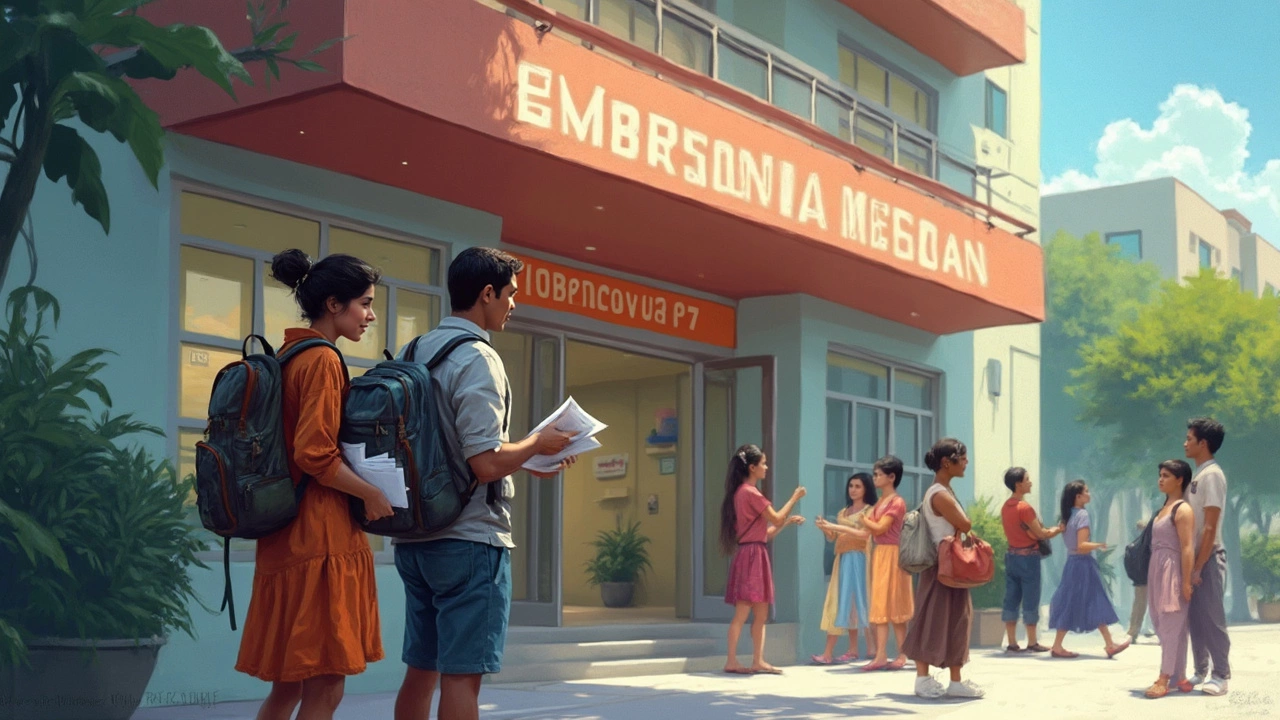You probably know someone who went to Mexico for dental implants, a tummy tuck, or even major surgery. Word spreads fast about lower prices and shorter wait times. But hang on—when it comes to your health, is it actually safe?
Mexico’s got a booming medical tourism scene, mostly because procedures can cost 50-70% less than in the US or Canada. Plus, you’re not stuck on a waiting list for months. Sounds perfect, right? Not so fast. Safety isn’t just about price tags or glossy clinic websites.
If you’re thinking about making the trip, you need to ask the right questions—not just about how much you’ll save, but also: Who’s treating you? What happens if something goes wrong? Are the clinics clean and following the latest standards? These things can seriously impact your experience and results.
Stick around, because you’re about to get the real deal on medical tourism in Mexico—no sugar coating, just facts and tips to help you choose wisely.
- Why Mexico Attracts Medical Tourists
- Risks and Realities of Medical Care Abroad
- How to Spot a Safe Clinic in Mexico
- Real Stories: The Good and the Bad
- Checklist Before You Book Your Trip
Why Mexico Attracts Medical Tourists
Let’s talk numbers. About 1.4 million people travel to Mexico every year just for medical care. It’s not just retirees or folks on a budget—plenty of regular people from the US and Canada line up for dental work, plastic surgery, and even complex treatments like heart surgery.
The main reason? The price difference is huge. A dental implant in the US can run over $3,500 per tooth. In Mexico, the same job might cost you around $1,000. That’s not small change. Surgeries like hip replacements or gastric bypass can cost half—or even a third—of what you’d pay at home. And you get to skip the long waits you often see up north.
Medical tourism in Mexico is built on more than just cheap deals. There’s top talent, too. Many Mexican doctors train in the US or Europe, and some hospitals have international accreditation—basically, a stamp that says they’re up to global standards. Big cities like Tijuana, Cancun, and Mexico City have private clinics catering to foreign patients, with English-speaking staff and modern gear.
Another reason folks cross the border is the convenience. Lots of clinics are just minutes from the US, like in Tijuana or Los Algodones. Some even offer shuttle rides straight from border crossings or airports. You get treated and recover in a sunny place—sometimes squeezing in a mini-vacation.
Word-of-mouth and glowing online reviews keep the flow going, especially for dental work, eye surgeries (like LASIK), and cosmetic procedures. Clinics compete hard for foreign clients, offering package deals, hotel bookings, follow-up care, and even help with paperwork for your insurance reimbursement.
Risks and Realities of Medical Care Abroad
Let’s get honest—there’s no such thing as zero risk, even in your home country. But crossing borders for medical work comes with a few extra twists. Here’s what you need to watch out for in Mexico.
First up, the experience and credentials of doctors vary a lot. Not every surgeon in a fancy ad is equal to a board-certified specialist. Some clinics cut corners. It's not unusual to see clinics that aren't regulated as closely as hospitals in the US, so safety checks can be looser. One 2023 report from the US CDC confirmed outbreaks of antibiotic-resistant infections among Americans who had surgery in Mexico, showing there’s real risk if you pick the wrong place.
Cleanliness is a biggie. Outbreaks of infections like hepatitis, tuberculosis, or surgical site infections have made headlines more than once. Procedures like liposuction and weight-loss surgery have higher complication rates when done in places lacking strict aftercare or infection control.
Language barriers can mess with your care. Misunderstandings about allergies, medical history, or after-surgery instructions have led to some rough surprises for travelers. It’s not just about being able to order tacos—medical jargon is complicated, and mistakes get serious fast.
And let’s talk insurance. Most US or Canadian insurance plans don’t cover complications from procedures done abroad. If something goes wrong and you need a fix-up back home, you’ll probably pay out-of-pocket. Plus, getting legal help if something goes sideways is way harder across borders.
The numbers don’t lie. Here’s a quick look at medical tourism in Mexico, including from safety reports:
| Fact | Data |
|---|---|
| Annual inbound medical tourists (est.) | Over 1.2 million |
| Average cost savings vs. US | 50-70% |
| Reported major complications (per recent CDC advisory, 2023) | +30 cases in 6 months (US citizens) |
| Percentage of unregulated clinics (urban centers, estimate) | About 35% |
Don’t forget these common risks:
- Fake medications or subpar implants (especially in dentistry and cosmetic work).
- Lack of emergency support—many clinics don’t have full hospital backup if something takes a turn.
- Gaps in follow-up care; once you fly home, you’re on your own.
So, is medical tourism in Mexico always dangerous? Not at all. But the realities are stark: you have to do your homework, double-check doctor credentials, and read reviews from real patients—not just Instagram comments. Otherwise, a cheap trip can get expensive really fast.

How to Spot a Safe Clinic in Mexico
If you’re serious about medical tourism in Mexico, finding a safe clinic is the biggest step. Not every clinic that looks fancy online actually meets good standards. Here’s what you should keep an eye out for.
- Accreditation counts—big time. Look for clinics with official accreditation, like the Joint Commission International (JCI) sticker or Mexico’s General Health Council certification (Consejo de Salubridad General). These groups don’t hand out their seal to just anyone—they actually check for safety and quality.
- Doctor’s credentials are non-negotiable. Double-check that your doctor is board-certified in their specialty. In Mexico, you can look them up with the Mexican Council of their specialty (like Consejo Mexicano de Cirugía Plástica for plastic surgeons). Real surgeons have registration numbers and listings—never just take someone’s word for it.
- Ask about infection control. Cleanliness is more than mopping floors. Does the clinic follow strict sterilization and infection control rules? When in doubt, ask direct questions. Top clinics don’t hesitate to share details about their process.
- Communication is huge. If a clinic hustles you into booking or avoids your questions, huge red flag. Safe clinics reply quickly, give honest answers, and provide written quotes and aftercare instructions in clear English.
- Reviews—read between the lines. Good reviews are a starting point, but read the negatives, too. Check sites like Google, RealSelf, or even international Facebook groups. Watch for patterns, not just one angry guy.
Bonus tip: Most legit hospitals and clinics in places like Tijuana, Cancun, and Mexico City offer video consults before you travel. If they insist you pay upfront without a conversation, walk away. And always use credit cards—no bank transfers to some random account. Scams do happen and this is how you avoid them.
Don’t fall for flash—focus on the certifications, the transparency, and the real-life experiences of past patients. It’s your body; treat it like it’s worth more than a cheap vacation deal.
Real Stories: The Good and the Bad
Let’s get real—there are medical tourism stories from Mexico that swing both ways. You’ll see people raving on Facebook about a brand-new smile for half the US price. You’ll also read about botched surgeries and scary ER visits. The truth is, both things happen, and you want to land on the good side.
Here’s an example: In 2023, a Texas man named Robert went to Tijuana for dental implants after his US dentist quoted over $20,000. In the end, Robert paid under $7,000 and said the clinic was spotless, the staff spoke great English, and he even got help booking a nearby hotel. A bunch of people in his Facebook group shared similar wins with other clinics in Cancun and Monterrey—clean facilities, qualified doctors, and smooth recoveries.
But not every story turns out well. In 2022, a group of Americans traveled to Matamoros for cosmetic surgery. Two of them developed life-threatening infections caused by unsanitary equipment, which made headlines in the US and led to a CDC warning. Another well-known case was a woman from California who went to a supposedly-reputable clinic for weight-loss surgery but ended up in debt because of unexpected complications and no insurance coverage for recovery back home.
What makes the difference? Most of the positive experiences happened at clinics that were certified by Mexico’s health authority and had English-speaking doctors with international training. The problems popped up in clinics that cut corners or had poor communication. Reading real reviews and checking accreditations stopped a lot of people from repeating someone else’s mistake.
- Look for clinics with recognized certifications (like CSG or JCI).
- Don’t trust social media ads alone—find honest reviews on third-party sites.
- If a deal sounds way too good, double-check every detail before you book.
The bottom line: medical tourism in Mexico can be safe and affordable if you do your homework. Rushing or skipping research can cost you way more than you expect.

Checklist Before You Book Your Trip
Thinking about crossing the border for surgery? Before you lock in any travel plans, you’ve got to do some homework. Here’s what you need to double-check to make your medical tourism trip to Mexico as safe and smooth as possible.
- Doctor’s Credentials: Search for your doctor’s license number on the Mexican Medical Association website. Most certified specialists also belong to their own national medical boards. If you can’t find them—or their website looks sketchy—move on.
- Hospital or Clinic Accreditation: Look for clinics accredited by the Mexican General Health Council or even the Joint Commission International. Accreditation means they've hit certain quality and safety standards. Ask for proof or find their name on official lists.
- Communication and Language: Make sure you can speak directly with the surgeon. If you’re getting a translator, confirm their experience with medical terms.
- Emergency Plans: Ask the clinic how they deal with complications. Where’s the nearest major hospital? Legit clinics have plans for emergencies, and they’ll be up front about it.
- Costs and Payment: Get a full price breakdown ahead of time, and ask about possible extras if complications need extra care. Don’t pay a huge deposit before arriving, and always get receipts.
- Your Medical Records: Gather all your health info—lab results, history, meds—and send it to the clinic before the trip. That way, they’ll actually know your case before you show up.
- Travel Insurance: Regular travel insurance doesn’t always cover planned medical procedures. Look for special medical tourism insurance that covers things like surgery complications and surgery cancellations.
- Real Reviews: Check for genuine patient reviews on independent sites, not just what the clinic posts. Social media and support groups can be goldmines for honest feedback.
If you want a quick sense of how Mexican clinics stack up, check out this comparison:
| Key Check | Public Mexican Hospitals | Private Accredited Clinics | Independent Small Clinics |
|---|---|---|---|
| Accreditation | National (most) | Often international | Rarely |
| Doctor Language Skills | Usually basic | Often fluent in English | Varies |
| Emergency Facilities | Fully equipped | Partnered hospitals | Basic or none |
| Transparent Pricing | No (public rates) | Usually | Often unclear |
| Consistent Quality | Mixed | High | Unpredictable |
One study from Patients Beyond Borders points out, “Accredited private hospitals in Mexico serve nearly one million international patients each year—and complication rates are not significantly higher than in the U.S."
According to Dr. Jorge Gutierrez, director at Angeles Health International: “If the clinic has clear credentials and talks you through possible risks, you’re on the right track. It’s the places that rush things or dodge questions that you want to avoid.”
Don’t let anyone pressure you into a quick decision. Safe and successful medical travel starts with proper planning. Asking tough questions doesn’t make you a problem patient—it makes you smart.



